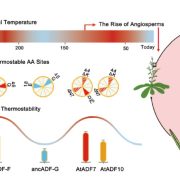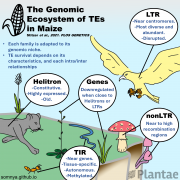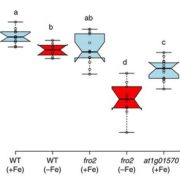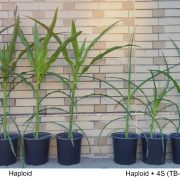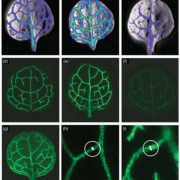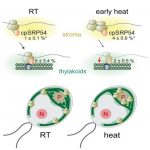The PARTHENOGENESIS gene that contributes the clonal propagation through seeds in dicot dandelion (Nature Genetics)
 In plants with sexual reproduction, the male contribution (two sperm cells) is necessary to fertilize two female cells, the egg cell that gives rise to the embryo and the central cell that gives rise to the endosperm. In contrast, apomictic plants (0.1% of flowering plants spread over 120 genera) don´t need the male input, they generate seeds asexually with only maternal genetic information. This trait ensures that the progeny is genetically identical to the maternal plant, and ensures seed production even without pollination, so is particularly interesting for seed crop production. Dandelion (Taraxacum officinale) usually reproduce asexually through apomixis, specifically parthenogenesis in which the unfertilized egg cell undergoes embryogenesis. Previously in dadelion the PARTHENOGENESIS (PAR) locus was identified that has a dominant effect on apomixis. Here, Underwood, Vijverberg, Rigola, et al. assembled and analysed the sequences of the PAR locus of both triploid apomictic and diploid sexual forms of Taraxacum. They noticed that the PAR gene is expressed in the egg cells of the apomictic dandelion whereas in the sexual form the PAR gene is mainly expressed in pollen. Further, the authors found a 1kb insertion upstream the PAR promoter region in the apomictic plants but absent in the sexual ones. Finally, they confirmed the functional importance of the PAR allele; driving the expression of a homologous lettuce gene (Lssex) in ovules was sufficient to induce parthenogenesis. These findings will contribute to the implementation of synthetic apomixis in dicot plants. (Summary by Rigel Salinas-Gamboa @Rigelitactica). Nature Genetics 10.1038/s41588-021-00984-y
In plants with sexual reproduction, the male contribution (two sperm cells) is necessary to fertilize two female cells, the egg cell that gives rise to the embryo and the central cell that gives rise to the endosperm. In contrast, apomictic plants (0.1% of flowering plants spread over 120 genera) don´t need the male input, they generate seeds asexually with only maternal genetic information. This trait ensures that the progeny is genetically identical to the maternal plant, and ensures seed production even without pollination, so is particularly interesting for seed crop production. Dandelion (Taraxacum officinale) usually reproduce asexually through apomixis, specifically parthenogenesis in which the unfertilized egg cell undergoes embryogenesis. Previously in dadelion the PARTHENOGENESIS (PAR) locus was identified that has a dominant effect on apomixis. Here, Underwood, Vijverberg, Rigola, et al. assembled and analysed the sequences of the PAR locus of both triploid apomictic and diploid sexual forms of Taraxacum. They noticed that the PAR gene is expressed in the egg cells of the apomictic dandelion whereas in the sexual form the PAR gene is mainly expressed in pollen. Further, the authors found a 1kb insertion upstream the PAR promoter region in the apomictic plants but absent in the sexual ones. Finally, they confirmed the functional importance of the PAR allele; driving the expression of a homologous lettuce gene (Lssex) in ovules was sufficient to induce parthenogenesis. These findings will contribute to the implementation of synthetic apomixis in dicot plants. (Summary by Rigel Salinas-Gamboa @Rigelitactica). Nature Genetics 10.1038/s41588-021-00984-y


